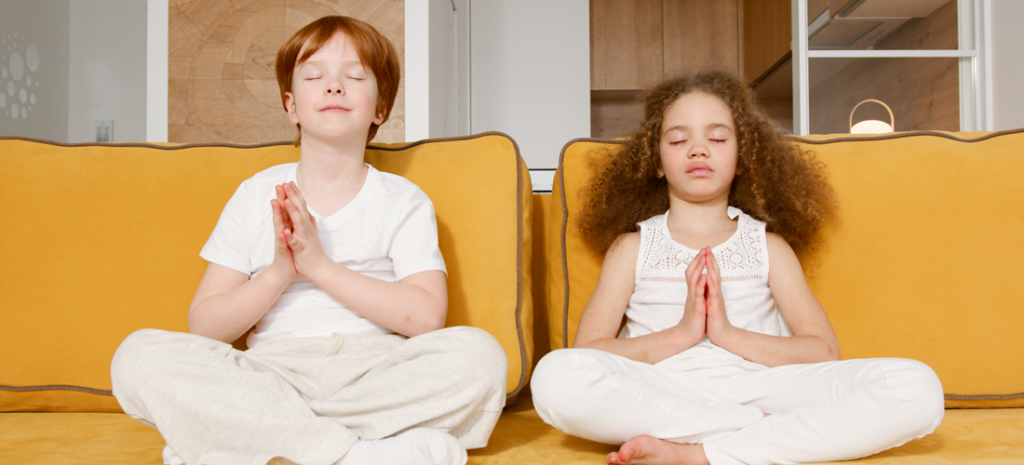We’re all too familiar with stress. The hustle and bustle of our daily lives can leave us feeling like we’re on a constant treadmill that never stops. And when we let that stress get the best of us, it can lead to harmful effects on our physical and mental wellbeing. If you’re looking for a way to find inner peace and calm your mind amidst all the chaos, you may want to try breath awareness meditation. In this blog, we’ll explore the power of breath awareness meditation and what it can do for you.
What is Breath Awareness Meditation?
Breath awareness meditation is a type of meditation that focuses on the breath as the primary object of attention. During this practice, you simply bring your awareness to your breath, observing its natural rhythm without trying to change it or control it. The idea is to bring your attention to the present moment and let go of any distracting thoughts or emotions.
The Origins of Breath Awareness Meditation
Breath awareness meditation, also known as Anapanasati in Pali, is often associated with the traditions of Buddhist meditation, with its roots dating back to the time of Gautama Buddha. The Buddha emphasized the practice of breath awareness as a means of attaining enlightenment, and it’s even noted in the Anapanasati Sutta, one of the most important Buddhist discourses.
Over the years, the practice has transcended religious boundaries and has been adopted by various cultures and traditions worldwide, highlighting its universal appeal. Regardless of its origins, the primary aim of breath awareness meditation remains the same: to cultivate mindfulness and a deeper understanding of the self through the simple act of observing the breath.
How Breath Awareness Meditation Differs from Other Meditation Techniques
Breath Awareness Meditation sets itself apart from other meditation techniques in its simplicity and focus. While techniques such as Transcendental Meditation or Loving Kindness Meditation may involve complex mantras or visualization exercises, Breath Awareness Meditation solely directs attention towards the breath.
This focus on one’s natural breathing pattern encourages a state of present-moment awareness, minimizing distractions. Furthermore, unlike guided meditations that require a facilitator or audio aid, Breath Awareness Meditation can be practiced independently anywhere, making it a very flexible and accessible form of meditation.
At its core, this technique is about fostering mindfulness and self-awareness through the simple, yet profound act of conscious breathing.
Benefits of Breath Awareness Meditation
The benefits of breath awareness meditation are numerous. Breath awareness meditation, with its focus on mindfulness and self-awareness, provides a holistic approach to wellness. Through the simple act of observing one’s breath, practitioners can reap a bevy of benefits, making it an accessible and practical tool for promoting overall health and well-being.
- Enhanced Stress Management: Breath awareness meditation is a powerful tool for managing stress. By focusing on the breath, practitioners can actively disengage from distracting thoughts and troubling emotions, leading to a state of relaxation and tranquility. Regular practice can improve resilience towards everyday stresses, reducing the likelihood of burnout.
- Improved Focus and Concentration: This meditation technique, with its emphasis on breath awareness, hones attention skills. As practitioners aim to keep their focus on the breath, they are training their minds to concentrate better, which can have beneficial effects in other areas of life, such as work or studies.
- Boosted Self-Awareness: The act of observing one’s breath without judgment encourages self-exploration and fosters a deeper understanding of oneself. This heightened self-awareness can facilitate personal growth and promote healthier behaviors and thought patterns.
- Promotion of Emotional Well-being: By reducing stress and enhancing self-awareness, breath awareness meditation can significantly improve mental health. Regular practitioners often report feeling happier, more content, and more emotionally stable.
- Improved Physical Health: Alongside mental benefits, breath awareness meditation can contribute to physical health. Stress can wreak havoc on the body, contributing to high blood pressure, heart disease, and other conditions. By reducing stress, this form of meditation may improve heart health, boost the immune system, and promote overall well-being.
How to Practice Breath Awareness Meditation
- Find a Quiet Space: Seek out a peaceful location where external distractions are minimal. This could be a dedicated meditation room, a quiet corner of your home, or even a serene outdoor spot.
- Establish a Comfortable Posture: Get into a position that allows you to be both relaxed and alert. This could be sitting with a straight back, lying down, or even walking slowly. Ensure your comfort to maintain the position throughout the session.
- Close Your Eyes: Shutting your eyes can help reduce visual distractions and make it easier to focus inward. If you prefer, you can also keep your eyes half-open, gazing gently at a point in front of you.
- Begin with Deep Breaths: Start your session with a few deep breaths. This assists in calming the mind, relaxing the body, and shifting your focus to your breath.
- Focus on Your Breath: Bring your attention to the natural rhythm of your breath. Notice the sensations of the breath as it enters and leaves your body. You can focus on the sensation at your nostrils, or the rising and falling of your abdomen or chest.
- Maintain the Focus: Keep your attention on your breath for the duration of your meditation session. If your mind wanders, gently bring it back to your breath without judgment.
Tips for a Successful Practice
- Consistency is Key: It’s better to meditate for a short period every day than for a long period once a week. Consistency in practice helps to develop and strengthen the habit of meditation. Aim to meditate at the same time each day to help establish this routine.
- Start Small: Don’t pressure yourself to meditate for long sessions right from the start. Begin with just a few minutes each day, and slowly increase the duration as your concentration improves.
- Use a Meditation App: If you find it challenging to meditate on your own, consider using a guided meditation app. The guidance can help direct your focus to your breath and manage distractions more effectively.
- Release Expectations: It’s crucial to let go of any expectations you may have about your meditation practice. Some days might be easier than others. Remember, the goal is not to achieve a particular state but rather to maintain a consistent focus on your breath.
- Be Patient with Yourself: Understand that your mind will wander during meditation—it’s natural. The practice of Breath Awareness Meditation is not about forcing the mind to be still, but about noticing when it has wandered and gently guiding it back to the breath.
Breath Awareness Meditation for Kids
Breath Awareness Meditation is uniquely beneficial for children as it lays the foundation for a healthier and more mindful lifestyle. In an increasingly competitive and stressful world, children often grapple with tension and anxiety.
Breath Awareness Meditation can help them manage these feelings, promoting calmness and emotional balance. Fostering a habit of meditation aids in enhancing focus and concentration, beneficial for their academic pursuits. It’s also a useful tool for developing self-regulation skills, allowing children to better handle their emotions and reactions.
Breath Awareness Meditation practice practice encourages patience and mindfulness, teaching children to live in the present moment rather than being preoccupied with past or future worries.

Joyful Journeys – 6 Positive Benefits of Meditation for Kids
Teaching Breath Awareness Meditation to Kids: A Step-by-Step Guide
- Start by Explaining: Begin with a simple explanation of what Breath Awareness Meditation is. Use simple language and make it fun. You might say, “We’re going to play a game where we see how well we can pay attention to our breath!”
- Set the Stage: Choose a quiet space free from distractions. Have them sit comfortably, either on the floor or in a chair.
- Introduce Deep Breathing: Guide them to take deep, slow breaths. Encourage them to notice how their belly rises and falls with each breath.
- Maintain a Count: Instruct them to count their breaths. They can count one on the inhale and two on the exhale, up to ten, and then start again.
- Use a Guided Meditation: To keep them engaged, consider using a guided meditation designed for kids. There are numerous resources online that provide age-appropriate scripts.
- Be Patient: Understand that it might take some time for them to get the hang of it. Keep the sessions short in the beginning, gradually increasing the time as they become more comfortable with the practice.
- Reinforce Positivity: Always end the session on a positive note, praising their effort and encouraging them to share their experience.
Final Thoughts and Takeaways
Breath awareness meditation is a simple yet powerful tool that can help you find calmness and relaxation amidst the chaos of daily life. By bringing your awareness to your breath, you can learn to let go of negative thoughts and emotions and experience a sense of inner peace. Remember to be patient and kind with yourself as you start this practice. With time and consistent effort, you can reap the benefits of this meditation technique.








